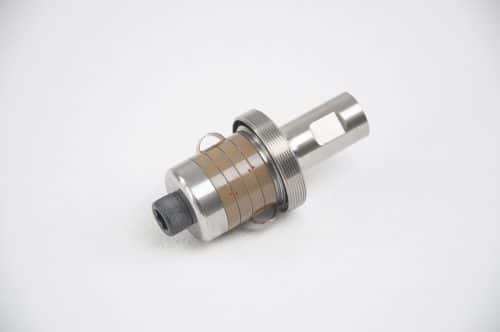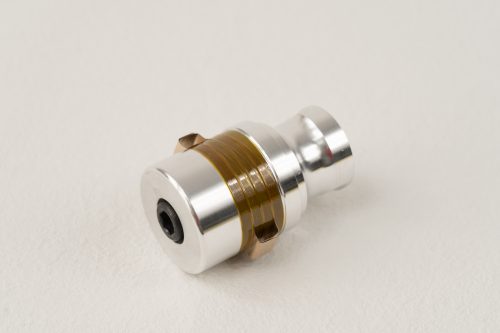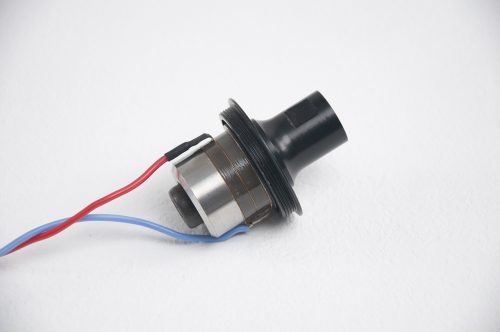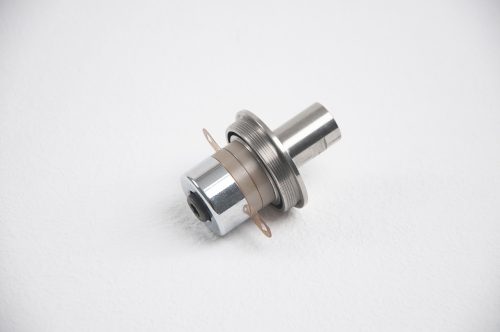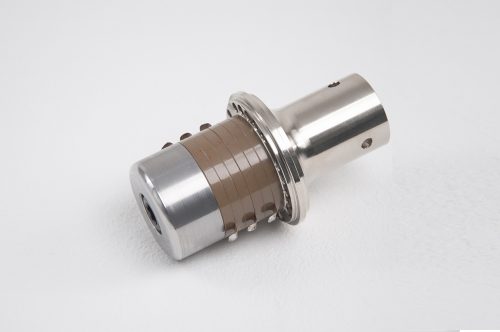Piezo-electric Working Principle, Perovskite and Polarization
Piezo-electricity is based on the ability of certain crystals to generate an electrical charge when mechanically loaded with pressure or tension, which is called the direct piezo effect. Conversely, these crystals undergo a controlled deformation when exposed to an electric field – a behavior referred to as the inverse piezo effect. The polarity of the charge depends on the orientation of the crystal relative to the direction of the pressure.
This process is called the direct piezo effect. Conversely, controlled deformation when exposed to an electric field is a behavior referred to as the inverse piezo effect. The polarity of the charge depends on the orientation of the crystal relative to the direction of the pressure.

Direct piezo-electric effect

Inverse piezo-electric effect
The Perovskite Structure
Ceramics exhibiting piezo-electric properties belong to the group of ferroelectric materials. Today’s systems are almost exclusively based on lead zirconate titanate (PZT); i.e., they consist of mixed crystals of lead zirconate (PbZrO3) and lead titanate (PbTiO3). Piezo-ceramic components have a polycrystalline structure comprising numerous crystallites (domains) each of which consists of a plurality of elementary cells. The elementary cells of these ferroelectric ceramics exhibit the perovskite crystal structure, which can generally be described by the structural formula A2+B4+O32-.
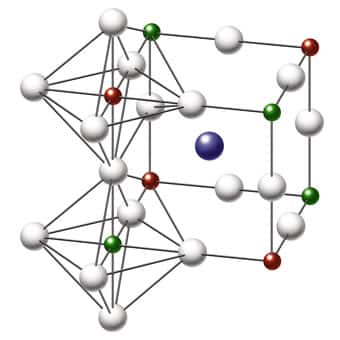
Schematic diagram of an ideal perovskite structure, neglecting distortions due to spontaneous polarization below Curie temperature. The bivalent cation is located in the center of the cube, while the tetravalent cations form the cube corners. The bivalent anions are located in the center of each cube edge in this illustration. For the PZT (lead zirconate titanate) mixed crystal, the formula is: A: Pb2+, B: Ti4+ / Zr4+
Piezo-electric Properties through Polarization

Ferroelectric ceramics before, during and after polarization
These piezo-electric properties have to be originated by “polarization”. In this process, the ceramic body is exposed to a strong electric DC field that causes the electric dipoles to become aligned in the direction of the field. They maintain this orientation to a large degree even after the DC field is no longer applied (remanent polarization) – a necessary condition for the piezo-electric behavior of ferroelectric ceramics.
For more information on the fundamentals of piezo-ceramic technology, the dynamic behavior of piezo-ceramics and the fundamental modes of piezo-electric resonators, we recommend our brochure “High-performance Ceramics in Piezo Applications”.




